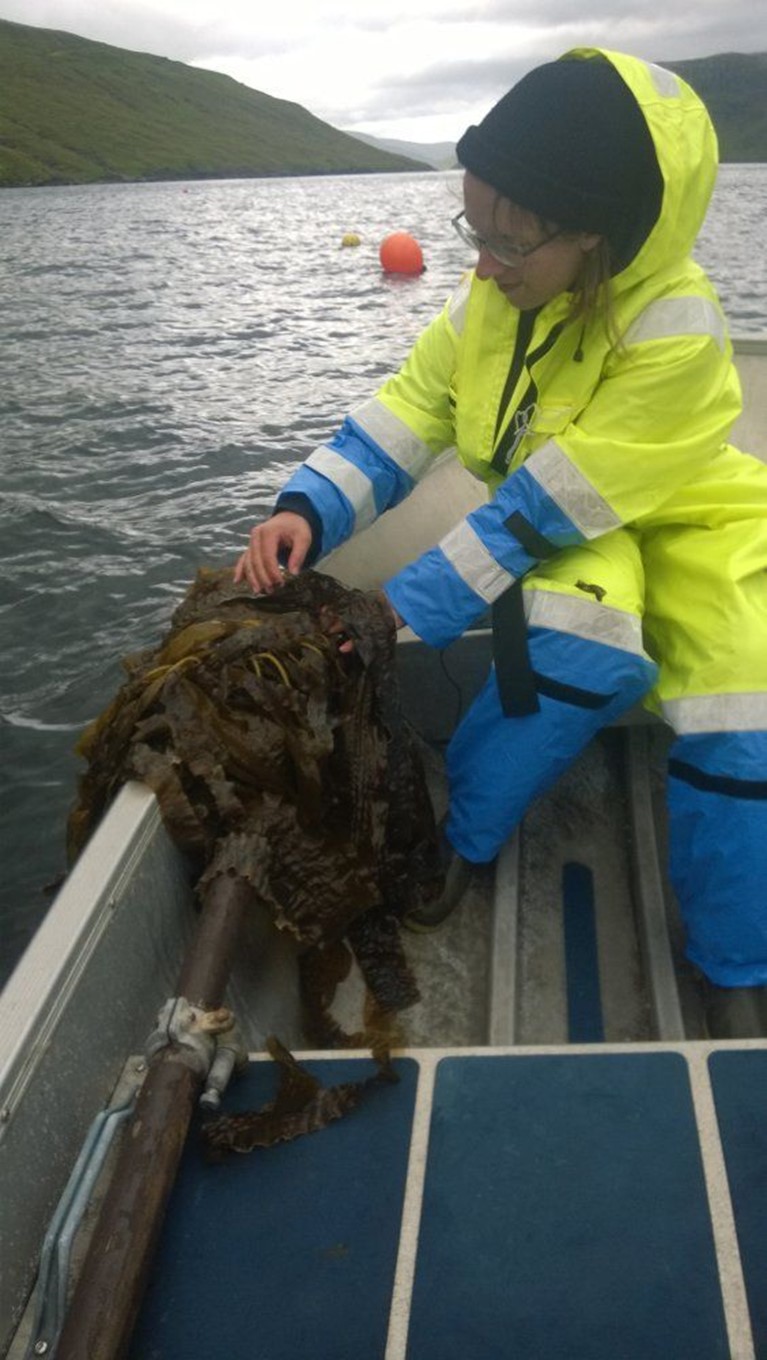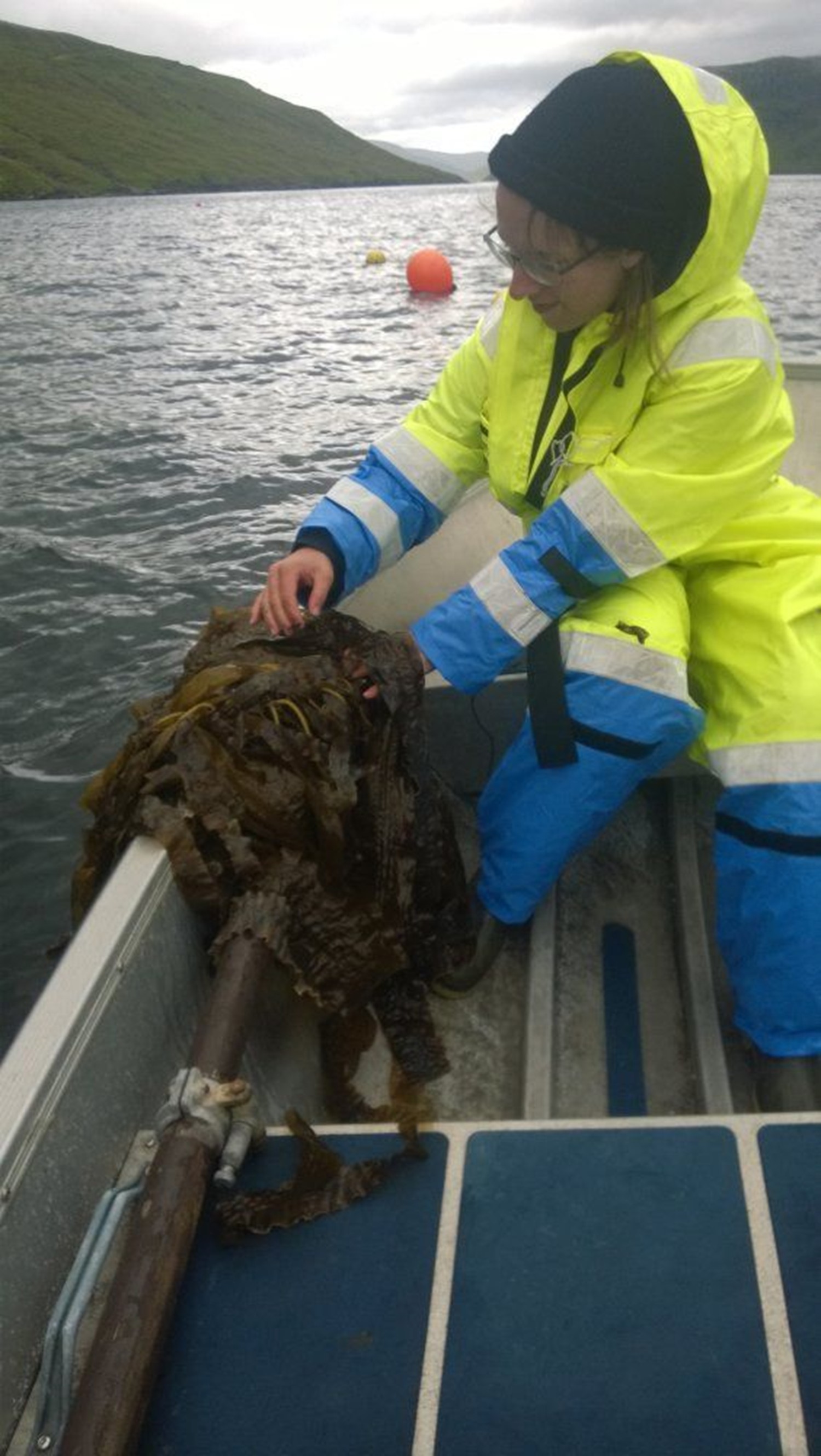The first scientific paper on seaweed farming on the Faroe Islands has been published. Agnes Mols Mortensen, researcher at Fiskaaling, is the first author. The other authors are Elma á Geilini Ortind, Charlotte Jacobsen, and Susan L. Holdt.
The paper provides basic knowledge on growth and quality of seaweed, farmed from a Faroese location, and is a starting signal for a knowledge-based seaweed farming industry on the Faroe Islands.
In the paper it is established that the quality of broadleaf kelp measured by the protein and essential amino acid content is contingent on the seasons and not on how exposed the kelp farm location is. The growth rate is not contingent on how exposed the location is either, but the individual kelp farmed at exposed locations weigh more than those who are farmed at sheltered locations.
The biggest return in kelp biomass (kilograms per metre of line) is at the sheltered farming location and not at the location with strong currents. The reason for this is believed to be connected with the alternative seeding method used. The seeding method is called ‘direct seeding,’ and the paper emphasises that this seeding method is suitable for sheltered locations and less suitable for locations with strong currents.
The title of the new scientific paper, which has just been published in Journal of Applied Phycology is: Variation in growth, yield and protein concentration in Saccharina latissimi (Laminariales, Phaecophyceae) cultivated with different wave and current exposures in the Faroe Islands.
The project is funded by Fiskaaling and Research Council Faroe Islands. Agnes Mols Mortensen was the supervisor.
The paper is, to a large extent, based on the MSc project of Alme á Geilini Ortind, which she carried out at Fiskaaling and defended at Danmarks Tekniske Universitet (DTU).
The paper in its entirety can be found here:
https://link.springer.com/content/pdf/10.1007/s10811-017-1169-4.pdf


